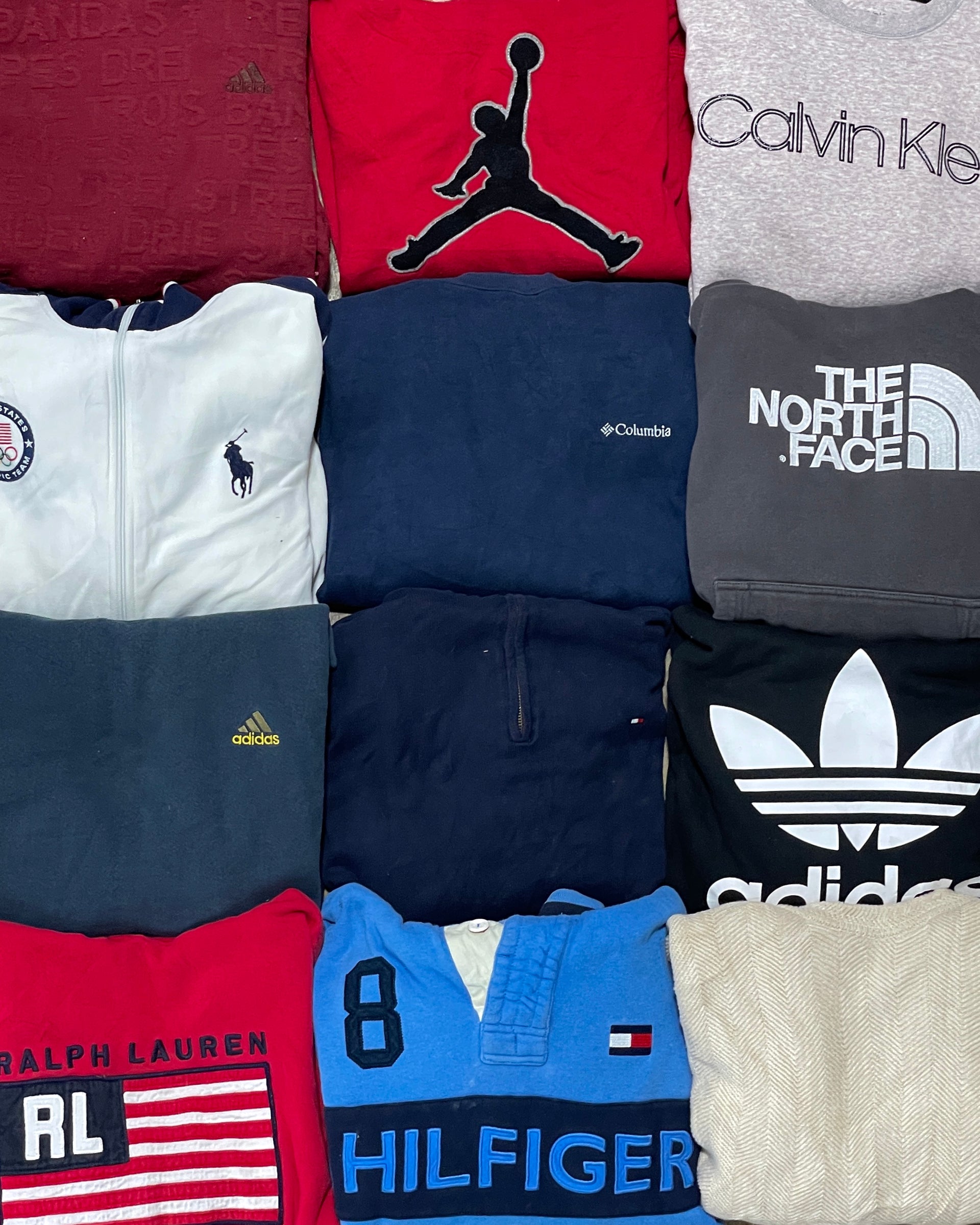Why Branded Clothing Made with Natural Fibers Feels Better
Why Branded Clothing Made with Natural Fibers Feels Better
Blog Article
The Importance of Lasting Garments: Exactly How It Influences the Setting and Your Wardrobe
Sustainable clothes is significantly acknowledged for its important duty in lessening the ecological influence of the fast garment industry. By focusing on green products and ethical production approaches, it resolves pushing eco-friendly issues. This shift not only benefits the world yet also influences consumer selections, bring about an extra thoughtful strategy to wardrobe administration. Recognizing these characteristics elevates vital concerns about style's future and personal responsibility fit it.
The Environmental Impact of Rapid Style

Benefits of Lasting Materials
Lasting materials offer considerable benefits, specifically through environment-friendly material choices that lessen ecological damage. These materials likewise show sturdiness and durability, lowering the demand for regular replacements. As an outcome, they contribute to a much more sustainable garment industry and promote responsible consumer actions.
Eco-Friendly Material Options
While the apparel industry has long been related to rapid fads and ecological harm, the surge of green textile options offers a transformative chance. Lasting products such as organic cotton, hemp, and Tencel have actually obtained appeal due to their lower ecological impact. These materials are typically generated without unsafe pesticides and need less water, minimizing their carbon footprint - Branded Clothing. In addition, numerous green materials are biodegradable, contributing to a circular economic situation by lessening waste. Picking lasting materials not just supports ecologically responsible methods yet also advertises much healthier environments. As consumers become a lot more familiar with their buying power, the need for environment-friendly textiles urges brands to innovate and embrace even more sustainable manufacturing techniques, eventually benefiting the world and future generations
Durability and Durability Benefits
Several consumers are progressively identifying the resilience and longevity benefits of lasting products in their clothing selections. Unlike conventional materials, sustainable materials such as natural cotton, hemp, and recycled polyester are engineered to withstand damage, causing garments that last longer. This minimized frequency of replacement not just saves consumers money gradually however also reduces waste produced by fast style. On top of that, sustainable apparel commonly employs environment-friendly production methods that improve fabric stamina, adding to a decrease in the overall carbon impact. By investing in durable apparel, consumers can cultivate an extra sustainable closet while taking pleasure in high-quality pieces that keep their visual and performance gradually. Sturdiness and long life stand as essential benefits of picking sustainable products.
Reducing Waste Via Lasting Practices
Minimizing waste in the fashion business can be attained with innovative practices such as upcycling and repurposing materials. In addition, embracing minimalist closet techniques encourages consumers to prioritize high quality over quantity, eventually decreasing clothes intake. Together, these methods contribute greatly to a much more sustainable garments model.
Upcycling and Repurposing Materials
Upcycling and repurposing materials have actually become cutting-edge methods in the fashion industry, transforming discarded fabrics into useful brand-new items. This method not just lessens waste however additionally motivates creative thinking and individuality in clothing style. By taking old garments and products, designers can produce one-of-a-kind pieces that mirror personal design while reducing the demand for brand-new resources. In addition, upcycling frequently needs much less power and water compared to conventional manufacturing processes, considerably decreasing the ecological footprint of fashion. As customers end up being much more conscious of sustainability, the appeal of upcycled apparel remains to climb, advertising a round economy. Inevitably, these techniques add to an extra lasting future, where fashion prioritizes environmental health over rapid manufacturing and usage.

Minimal Wardrobe Techniques
As individuals increasingly seek to decrease their ecological influence, embracing minimal closet techniques has actually gotten grip as a reliable method to sustainable fashion. These methods emphasize high quality over quantity, encouraging consumers to curate a smaller sized collection of functional, durable garments. By concentrating on timeless pieces that can be mixed and matched, individuals can decrease the frequency of acquisitions and eventually reduce waste.Additionally, minimalism promotes mindful intake, prompting customers to assess the environmental and ethical ramifications of their selections. This approach not just fosters a more sustainable way of living but likewise streamlines everyday decision-making pertaining to attire. As individuals embrace minimalist principles, they add to a style culture that values sustainability and accountable consumerism, inevitably leading to a much more eco-conscious society.
The Duty of Honest Labor in Sustainable Fashion
While numerous consumers are significantly aware of the ecological repercussions of their apparel selections, the relevance of moral labor methods in sustainable style can not be overlooked. Moral labor encompasses fair salaries, safe working conditions, and regard for employees' legal rights, developing the foundation of responsible style production. Brand names that focus on ethical labor not only boost communities but likewise established a criterion for accountability in the industry.Moreover, the integration of ethical practices cultivates openness, making it possible for customers to make informed options regarding their purchases. This practice contrasts sharply with fast style's exploitative labor models, which typically prioritize earnings over individuals. By supporting business dedicated to moral labor, consumers add to a system that values human dignity together with environmental sustainability. Consequently, honest labor is not simply an add-on; it is crucial to the broader goal of lasting style, making sure that the pursuit for eco-friendliness does not come at the expenditure of human rights.
The Impact of Sustainable Apparel on Carbon Emissions
Lasting garments has the possible to considerably reduce carbon emissions connected with the garment industry. Traditional garment manufacturing adds notably to greenhouse gas exhausts, largely because of energy-intensive manufacturing procedures and the use of non-renewable resources. In contrast, sustainable style concentrates on environmentally friendly products, such as organic cotton or recycled fibers, which commonly require much less energy to produce.Moreover, sustainable brands tend to embrace more effective manufacturing practices, reducing waste and reducing general exhausts. By focusing on sturdiness and ageless design, sustainable apparel urges consumers to purchase much less regularly, more decreasing the carbon impact connected with overconsumption.Additionally, numerous sustainable brand names are devoted to transparency in their supply chains, making it possible for consumers to make informed options that straighten with their worths. Eventually, shifting towards lasting garments can cause a substantial reduction in carbon discharges, contributing to a much healthier planet and a much more lasting future for the apparel industry.
Sustaining Neighborhood Economic Climates With Lasting Options
The shift towards sustainable garments not only addresses environmental concerns however additionally substantially advantages neighborhood economic situations. By choosing lasting fashion, consumers usually sustain local craftsmens and small companies, boosting community resilience. These business generally operate a smaller range, focusing on workmanship and ethical methods over mass production.Investing in locally made sustainable useful link garments fosters work creation and promotes financial development within communities. As consumers become more knowledgeable about the ecological influence of their purchases, they increasingly look for items that show their values. This demand encourages local producers to take on sustainable techniques, adding to a circular economy.Moreover, supporting neighborhood companies minimizes transport exhausts, aligning with eco-conscious consumer actions. The interconnectedness of sustainable apparel and local economies underscores the essential function that private options play in promoting both financial and ecological health. By promoting these neighborhood links, communities can flourish while also functioning in the direction of a much more lasting future.
Transforming Your Storage Room: Tips for a Lasting Wardrobe
As people look for to minimize their environmental influence, transforming a closet right next into a lasting wardrobe ends up being a vital step. One reliable method is to assess existing garments, maintaining just products that are put on regularly and that straighten with sustainability goals. Prioritizing high quality over amount is vital; buying durable pieces from eco-friendly brands can substantially minimize waste.Additionally, including second-hand items can revive a closet while reducing environmental damages. Organizing garments swaps with buddies or donating unused things can additionally promote sustainability.When shopping, individuals should look for materials that are organic, recycled, or eco-friendly, and avoid rapid style sellers - Branded Clothing. Practicing mindful intake by thoughtfully considering each acquisition can add to a much more lasting way of life. By executing these ideas, one can create a wardrobe that shows personal design while supporting environmental stewardship
Regularly Asked Inquiries
Just How Can I Recognize Lasting Garments Brands?
To recognize sustainable clothes brand names, one ought to research products used, look for qualifications like Fair Profession, and examine the brand name's transparency regarding their production processes, labor practices, and environmental impact, ensuring environmentally friendly and honest practices are focused on.
What Are the Expenses Linked With Lasting Style?
The expenses linked with sustainable fashion can differ considerably. Greater manufacturing expenditures, ethical sourcing, and eco-friendly products typically result in raised list prices, which might prevent some consumers while interesting environmentally mindful shoppers.
Can Sustainable Clothes Be Fashionable and elegant?
Lasting garments can indeed be fashionable and stylish. Developers significantly focus on ingenious products and moral manufacturing approaches, showing that style and sustainability can exist side-by-side. Customers now have diverse alternatives that blend looks with environmental awareness.
Just How Does Laundering Garments Affect Their Sustainability?
Cleaning clothing substantially effects sustainability by consuming water and power, adding to air pollution, and triggering microplastic release. Constant washing can weaken materials, reducing their life expectancy and raising the requirement for substitutes, eventually intensifying ecological worries.
What Is the Life Expectancy of Sustainable Clothing Contrasted to Quick Style?
The life expectancy of lasting garments generally goes beyond that of fast style items, commonly long-term several years due to quality products and workmanship. On the other hand, fast fashion garments may break down quickly, requiring even more constant substitutes. Sustainable clothes is increasingly recognized for its critical function in lessening the ecological influence of the quick style industry. While many consumers are significantly aware of the ecological consequences of their apparel choices, the importance of ethical labor techniques in sustainable style can not be ignored. Branded Clothing. Lasting garments has the prospective to significantly minimize carbon emissions associated with the style sector. In contrast, lasting style focuses on eco-friendly products, such as natural cotton or recycled fibers, which frequently require less power to produce.Moreover, sustainable brands often tend to take on more reliable production methods, minimizing waste and reducing total emissions. By prioritizing durability and timeless layout, investigate this site sustainable garments encourages customers to purchase much less often, further decreasing the carbon impact linked with overconsumption.Additionally, numerous lasting brands are dedicated to openness in their supply chains, enabling customers to make enlightened choices that straighten with their values
Report this page